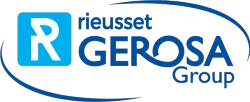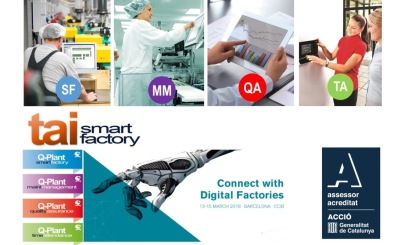
20 Oct The paperless factory
Can you imagine working in an orderly environment where your desk is free of unnecessary clutter and you can therefore concentrate on the work that is right in front of you? Well, that’s how we imagine the Rieusset factory, and although we still have a long way to go, this is an idea we are working on to make it come true in the not-too-distant future.
Recently we shared a post on Industry 4.0 in which we described how some time ago we started this project that resulted in a roadmap with the challenges that we posed for a 3-year scenario. Today, one of these challenges is about to complete its first phase: the paperless factory.
For many years at Rieusset we have had a data capture system by which we collect all relevant production information to identify not only our production output, but also everything that is not efficient in order to improve it. We have based ourselves on this experience to design what is now about to see the light of day.
But what is the paperless factory?
What we imagine is a factory where absolutely all the documentation used in the production environment is converted into an electronic format: manufacturing orders, design drawings, process conditions, self-checks and many other documents that are habitually used in the production areas.
And does this have any advantages?
Of course it does. One of them, since today we are talking about the environment, is the paper we will be able to save once we stop having the need to print it. But is this the main one? No. How many times have you had a printed production order that did not contain the final information? A few? Well, the advantage of digitization allows us to access information in real time, and although we cannot avoid that someone makes a mistake when entering information –although many times we can– we can have access to the latest updated information.
Also, this advantage is not merely unidirectional. In the same way that information can be obtained from the system in real time, information can be input into the system in real time. With this, an incident can be detected much more quickly. But I’m not talking about knowing if a machine is out of order –we have been able to know this for a long time, at least in Rieusset, with the system that we currently have and that we installed more than ten years ago– but rather, knowing that with the data entered in the self-checks we can detect trends and see if the process can get out of control.
What can be done with this system?
Although the process we have defined in Rieusset has several implementation phases, in its first phase the system allows us to access the planning software in order to identify what we have to produce, access the ERP for the technical sheet of the product to be manufactured, and access the defined and approved process conditions for a specific reference in order to prepare the machine for the new production, as well as the material: medium, inks, cylinders, etc. that we have to use.
Moreover, the system allows us to collect all the information on what we are doing at all times (change times, production or any stoppage), the quantity produced, process waste, in addition to the quality data that is collected in the self-checks with the help of controls that avoid input errors. Among other things, this information allows us to know in real time the performance of the machines with the calculation of indicators such as the OEE.
This system also lets us access the plans and records of cleaning and preventive maintenance of each equipment in addition to interacting with other programs such as maintenance, which allows us to open corrective activities online and do their follow-up without having to ask anyone or check anything that is not in the terminal.
Further to all this, we must point out that thanks to having all the information in the system, traceability provides a qualitative leap in quality.
All the information that is collected can then finally be analyzed from the platform with the possibility of viewing the information from different points of view according to the user’s need.
But what system have we installed?
Like many other things, we are only specialists in what we produce –flexible packaging and labels– so for the development of this project we have placed ourselves in the hands of a renowned supplier who has given us the necessary technology to implement it in Rieusset and help us achieve our challenge: TAI Smart Factory.
They have guided us through the software implementation process and helped us configure it, as well as the development of those particular features that we requested.
However, we have only started the first phase. We are already preparing the next one with the not-too-distant goal of achieving the dream of the “paperless factory.”
| We Manufacture: | Meet Rieusset: |




